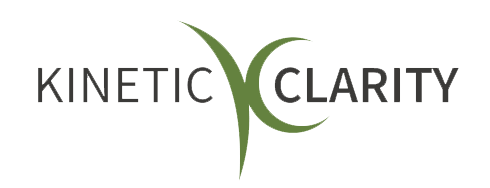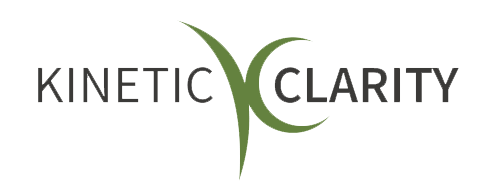The 5 Essential Components of Employee Mental Health & Wellbeing
Five components, two human needs, and one healthy workplace

The Surgeon General made waves recently when he released his report on mental wellbeing in the workplace. In it, he highlighted something that most workers came to realize during the pandemic, that our workspaces have a significant impact on our overall health and wellness.
The choice of the most important medical official in the country to focus on this topic supports an increasing movement to reduce stress in our everyday lives. The more we learn about what stress is and what it does to our bodies, the more we realize how harmful it is to our long-term health.
To help employers understand where they can begin supporting their workers and creating a culture of less stress, the Surgeon General released a framework of five essential areas of focus. Employers can use this framework to enact a plan to support their workers.
Each of the components for employee wellbeing meets two basic human needs.
Protection From Harm
The idea of keeping employees safe is a common sense first step in ensuring workers feel safe. This first Essential aspect covers both physical and psychological safety.
Employees can’t feel safe if they are unsure of what’s around each corner. When the possibility of damage being inflicted in some form is always in mind, even peripherally, employees can’t relax. When they don’t wholly trust in their safety, they won’t be entirely productive or focused.
Human Needs
Protection from harm covers the needs for safety and security. Physical, emotional, and mental safety are imperative in any environment, but especially one in which you’re expected to be productive.
For example, have you ever known a person who was unpredictable? They may sometimes be friendly and outgoing, and at other times they might act as if they don’t like you. Imagine your boss acting this way! That can make employees nervous all the time, never being sure which boss they will get. That’s bound to keep people on edge.
What This Looks Like
Keeping employees confident in their safety must include ensuring their physical safety as the number one priority. All aspects of the workspace needs to meet all safety standards so that nobody gets injured.
It should also include proper leadership and employee training in healthy and respectful interactions. Being able to communicate well isn’t just about getting your message across but doing it in a way that doesn’t cause friction.
Additionally, welcome all employees in all aspects of the company. Promote DEIA programs, and employees of all backgrounds will feel included and appreciated.
Connection & Community
Any healthy company culture involves the employees and fosters strong working relationships. You’ll recognize this when a workplace has a sense of a cohesive unit, where the employees operate as a team. They give the feeling that they operate “as one.”
Human Needs
A company that fosters connection and community provides its employees the essential components of social support and belonging. All members of the organization are accepted and welcomed.
We all have feelings of needing to be accepted. When we are, we feel safe. Instead of depleting valuable energy on worrying that other employees, or worse, management, are against them, they can concentrate on what’s important.
What This Looks Like
It’s easy to spot a company that prioritizes connection and community for its employees. There is strong teamwork, as well as trust between coworkers and also managers. Leadership offers help, not criticism; they model positive behavior, open communication, and good listening skills.
Healthy relationships flourish when a company puts importance on connection and community. They support and help each other and enjoy a social environment.
Work-Life Harmony
An overworked employee can’t possibly be a productive, healthy employee. Thankfully, work and outside life can coexist in balance with each other.
Employers can do a lot to encourage a clear separation between work and personal life. Neither one should impact the other; if the two begin to bleed into each other, it can cause stress or conflict.
Human Needs
A healthy company outlook embraces autonomy and flexibility. Workers should have reasonable input on things that affect them, such as the location and timing of their work.
Perhaps it’s helpful to ask: does an employee really need to be sitting at their desk working on a spreadsheet at 3 pm when it’s due the next day? What would happen if they did it from home at 3 am instead? If it gets turned in on time, it may not matter when and where they get it done.
What This Looks Like
Flexible schedules and remote locations are becoming more popular these days. Employees often thrive when they have greater control over how work gets done. A reliable schedule is vital in providing peace and stability for employees. Erratic schedules make it difficult to set clear boundaries for personal time.
It’s up to the company to set a culture of no work outside of work. When employees are off the clock, they should remain off the clock until the next day. It’s so easy to encroach little by little on personal time that it should be a hard no.
Mattering at Work
We can probably all relate to the terrible feeling of spending a great deal of time on a project, becoming deeply invested in it, only for it to go nowhere. It has a terrible effect on morale and can discourage further efforts.
We all need to feel that we matter and that our work makes a difference in some way. Otherwise, why should we bother doing it? Spending the whole day toiling away on something that has no effect does more than make a person feel like they’re wasting their time; it’s devaluing.
When a person does not feel valued or effective, stress and depression can grow.
Human Needs
Ensuring that employees feel like they are valued on the job provides them with dignity and meaning. They feel respected when they feel like they are making a significant contribution.
What This Looks Like
Companies need to pay a liveable wage for their employees to know they are valued. Fair pay is one way to show appreciation for a job well done.
Appreciation is vital in letting employees know they matter to the company, and financial appreciation isn’t the only way. There are many ways to recognize and thank your employees. When this is standard practice within an organization, the workers are happier and more content.
Opportunity for Growth
The natural next step after boosting company morale by making everybody know they matter is to give them opportunities to build on their skills and learn new ones. This has multiple benefits for employees and the company.
- Employees gain confidence in their work and an improved view of their skills
- They become more deeply engaged in the company
- Helps them set longer-term goals
Human Needs
Giving employees a chance to level up their skills nourishes their learning and accomplishment needs. Learning doesn’t stop once you’re out of school; our brains need to be consistently challenged and stretched to stay sharp. We feel satisfied and accomplished when we realize that we’ve learned new subjects or honed our skills.
What This Looks Like
Fulfill your employees' needs to grow by offering skill development and training. They can be small events or large off-site seminars. As long as you invest in their futures, your employees will trust that they are worth it.
Gaining a deepened engagement in their jobs and careers can be healthy for employees. How wonderful it is to feel passionate and engrossed in what you do for a living! That feeling of happiness gives your immune system a wonderful boost.
The Essential Components for Mental Wellbeing
It isn’t an employer’s responsibility to look after their employees’ mental health, but they can work to make conditions favorable enough that the work environment doesn’t have a negative mental impact. If an employer can successfully meet these five essential elements, they are on the right track to boosting employees’ confidence, happiness, and comfort.












